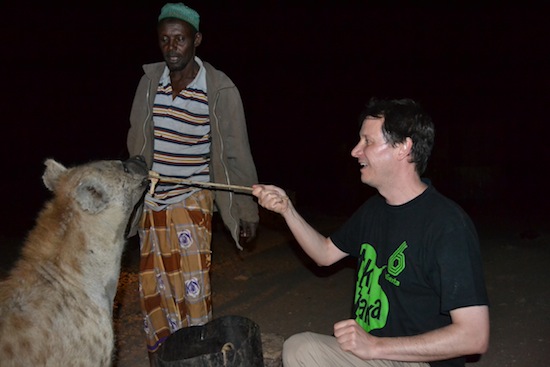Feeding the Hyenas in Harar, Ethiopia

Yours truly feeding a hyena while Yusuf looks on
The first thing you learn if you spend any amount of time living in Harar is that it is not a human town. It is a human town during the day and a human and hyena town at night.
This medieval walled city in eastern Ethiopia has been a center of trade for centuries. Situated in a temperate climate between the central Ethiopian highlands and the Somali desert, it spent much of its history as an independent city-state. The Hararis have a distinct culture and language confined almost exclusively to the town within the walls. The surrounding countryside is dominated by the Oromo, who have their own language and culture.
The Harari and Oromo share space with another language and culture, that of the hyenas. Not seen much by day, they come out at night to scavenge food and wander the labyrinth of alleys that make up Jugol, the old city. Humans and hyenas have become accustomed to one another and have developed a unique and close relationship.

